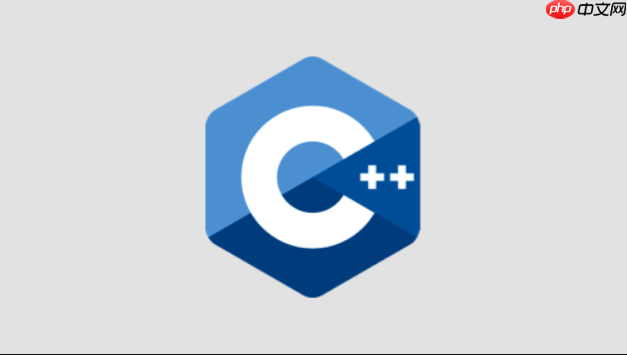c++中map需序列化后保存,常用方法有:1. 文本格式逐行写入键值对,适合调试;2. 二进制格式适用于固定长度类型,需先写大小再逐项写入;3. Boost.Serialization支持复杂类型,使用归档机制自动序列化;4. jsON格式通过nlohmann/json库转换,可读性强且跨平台。选择依据性能、可读性及兼容性需求。

在C++中,map 是一个关联容器,不能直接写入文件。要将 map 保存到文件,需要将其序列化为可存储的格式。常见的方法包括文本格式(如键值对形式)和二进制格式。以下是几种实用的保存方法。
1. 以文本形式保存 map 到文件
将 map 的每个键值对按行写入文本文件,适合调试和跨平台读取。
// 示例:保存 std::map<std::String, int>
#include <fstream>
#include <map>
#include <string>
std::map<std::string, int> data = {{“apple”, 5}, {“banana”, 3}, {“orange”, 8}};
std::ofstream out(“map.txt”);
if (out.is_open()) {
for (const auto& pair : data) {
out << pair.first << ” ” << pair.second << “n”;
}
out.close();
}
读取时逐行解析:
std::map<std::string, int> loaded;
std::ifstream in(“map.txt”);
std::string key;
int value;
while (in >> key >> value) {
loaded[key] = value;
}
in.close();
2. 以二进制形式保存简单类型 map
适用于 key 和 value 都是固定长度的基本类型(如 int、double),且不涉及指针或动态结构。
立即学习“C++免费学习笔记(深入)”;
注意:不能直接 fwrite 整个 map,但可以逐项写入。
std::map<int, double> m = {{1, 1.1}, {2, 2.2}, {3, 3.3}};
std::ofstream file(“map.bin”, std::ios::binary);
size_t size = m.size();
file.write(reinterpret_cast<const char*>(&size), sizeof(size));
for (const auto& pair : m) {
file.write(reinterpret_cast<const char*>(&pair.first), sizeof(pair.first));
file.write(reinterpret_cast<const char*>(&pair.second), sizeof(pair.second));
}
file.close();
读取时反向操作即可。
3. 使用 Boost.Serialization(推荐复杂场景)
Boost 提供了强大的序列化支持,能处理各种 STL 容器。
安装 Boost 后:
#include <boost/archive/text_oarchive.hpp>
#include <boost/archive/text_iarchive.hpp>
#include <fstream>
// 保存
std::ofstream os(“map.boost”);
boost::archive::text_oarchive oa(os);
oa << data; // data 是 map 变量
os.close();
// 加载
std::map<std::string, int> loaded_map;
std::ifstream is(“map.boost”);
boost::archive::text_iarchive ia(is);
ia >> loaded_map;
is.close();
4. 转为 JSON 格式保存(现代 C++ 推荐)
使用第三方库如 nlohmann/json 将 map 转为 JSON 字符串再写入文件。
#include <nlohmann/json.hpp>
using json = nlohmann::json;
json j;
for (const auto& pair : data) {
j[pair.first] = pair.second;
}
std::ofstream o(“map.json”);
o << j.dump(4); // 格式化输出
o.close();
基本上就这些常用方法。选择哪种方式取决于你的需求:调试用文本,高性能用二进制,通用性用 JSON 或 Boost。注意字符串长度、编码和跨平台兼容性问题。


